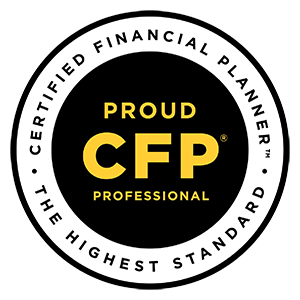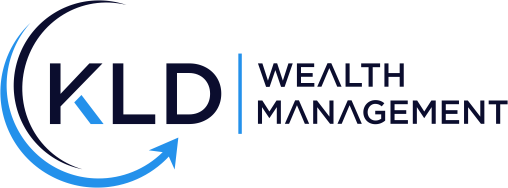Get in touch
Call or Text:
937-404-5180
Email:
dwiedmeyer@kldwealth.com
Whether you’re just starting to repay your loans or are preparing to borrow for your education, having a clear understanding of student loans and their repayment options is essential. Here’s a comprehensive look at the basics of student loans, the repayment strategies available, and how personal financial planning can help you select the right path for your unique situation.
The Basics of Student Loans
1. Types of Student Loans
When it comes to student loans, you’ll find two primary categories: federal and private.
- Federal Student Loans: These are loans offered by the U.S. Department of Education. They typically come with fixed interest rates, flexible repayment plans, and various borrower protections. Federal loans include Direct Subsidized Loans, Direct Unsubsidized Loans, Direct PLUS Loans, and Perkins Loans (which were discontinued in 2017).
- Private Student Loans: These are loans offered by private lenders such as banks, credit unions, or state-based organizations. Private loans usually have variable interest rates, less flexible repayment options, and fewer protections compared to federal loans. However, they may be necessary for students who need to borrow beyond the federal loan limits.
2. Subsidized vs. Unsubsidized Loans
- Subsidized Loans: With Direct Subsidized Loans, the federal government pays the interest while you’re in school at least half-time, during your grace period, and during deferment periods. These loans are only available to undergraduate students with demonstrated financial need.
- Unsubsidized Loans: With Direct Unsubsidized Loans, interest starts accruing as soon as the loan is disbursed, regardless of whether you’re in school or not. These loans are available to both undergraduate and graduate students, and they are not based on financial need.
3. Interest Rates and Loan Terms
Interest rates for federal student loans are fixed, meaning they won’t change over the life of the loan. Private loans, on the other hand, often come with variable rates, meaning your interest rate could increase or decrease over time. Additionally, private loans may require a co-signer if the borrower has a limited credit history or low credit score.
The repayment term for federal student loans is typically 10 years, but borrowers can often extend this term through various repayment plans. Private loans may have different repayment terms, and these are usually less flexible than federal loan options.
Repayment Options for Student Loans
Now that you understand the basics of student loans, the next step is to figure out how to repay them. Fortunately, there are a number of options available, especially for federal loans. Here’s a breakdown of some common repayment plans:
1. Standard Repayment Plan
The Standard Repayment Plan is the default option for most federal student loan borrowers. Under this plan, you’ll make fixed monthly payments for up to 10 years. The benefit of this plan is that you’ll pay off your loan more quickly and pay less interest compared to other plans. However, the monthly payments may be higher than they would be under income-driven repayment plans, which can be a challenge for recent graduates with lower incomes.
2. Graduated Repayment Plan
The Graduated Repayment Plan starts with lower monthly payments that gradually increase every two years. This plan is also set up for a 10-year term. It’s a good option for borrowers who expect their income to rise steadily over time. However, you’ll end up paying more in interest than you would under the Standard Plan because your initial payments are smaller.
3. Extended Repayment Plan
If you need lower monthly payments, the Extended Repayment Plan allows you to stretch your payments over 25 years instead of 10. This can make the loan more manageable in the short term, but keep in mind that the longer repayment period means you’ll pay significantly more interest over time.
4. Income-Driven Repayment Plans
Income-driven repayment plans are based on your income and family size. These plans include Income-Based Repayment (IBR), Pay As You Earn (PAYE), Revised Pay As You Earn (REPAYE), and Income-Contingent Repayment (ICR). Depending on the plan, your monthly payment could be as low as 10% to 20% of your discretionary income, and any remaining balance may be forgiven after 20 to 25 years of qualifying payments. These plans can offer relief for borrowers with lower incomes, but extending your repayment period also means paying more in interest.
The Role of Financial Planning in Student Loan Repayment
Understanding the repayment options available is just the first step. Figuring out which plan is right for you—and how it fits into your overall financial strategy—requires careful consideration. This is where personal financial planning comes into play.
1. Tailoring Repayment to Your Financial Goals
Your student loans are just one piece of your financial puzzle. Are you saving for a house? Investing for retirement? Paying off credit card debt? A financial plan helps you look at your whole financial picture and balance competing priorities. For example, if you’re on an income-driven repayment plan that offers loan forgiveness after 20 years, your strategy might be to maximize contributions to your retirement accounts rather than aggressively paying down your loans.
2. Managing Interest Accumulation
As with any debt, interest accumulation can be a major factor in how much your student loans ultimately cost. A financial plan can help you weigh the pros and cons of different repayment options in light of your other financial obligations. For instance, if you have high-interest debt like credit cards, you might focus on paying that down first while sticking to an income-driven repayment plan for your student loans.
3. Adjusting for Life Changes
Life is unpredictable, and your financial circumstances may change. Whether you get married, start a family, or face a job loss, it’s important to have a flexible repayment strategy that can adjust with you. A financial planner can help you revisit your loan repayment options and make changes as your life evolves.
4. Evaluating Loan Forgiveness Options
Certain careers, such as public service or teaching, may qualify you for loan forgiveness programs like Public Service Loan Forgiveness (PSLF) or Teacher Loan Forgiveness. A financial planner can help you evaluate whether these programs make sense for you and guide you through the process of applying for forgiveness.
Taking the Next Step
Student loans are a reality for many, but they don’t have to control your financial future. The key is to create a repayment strategy that aligns with your broader financial goals. Personal financial planning can help you take a holistic view of your finances, weigh your options, and make informed decisions about how to pay off your loans in a way that supports your long-term success.
Are you struggling to figure out the best way to repay your student loans? Don’t let your debt hold you back from reaching your financial goals. Let’s work together to create a personalized financial plan that fits your life and helps you build a secure financial future. Contact us today to schedule a consultation and take control of your student loan repayment strategy.
By understanding your student loan repayment options and how they fit into your larger financial plan, you can approach your debt with confidence and take steps toward financial freedom. Remember, you don’t have to do it alone—a tailored financial plan can help guide you every step of the way.



Phone
937-404-5180
706 Deerfield Rd.
Lebanon, OH 45036
Get financial wellness tips, directly to your inbox.
Contact Us
We will get back to you as soon as possible.
Please try again later.
All Rights Reserved | KLD Wealth | Privacy Policy | Form ADV
Advisory services offered through KLD Wealth Management, LLC, an investment adviser registered with the state(s) of Ohio. Advisory services are only offered to clients or prospective clients where KLD Wealth Management, LLC and its representatives are properly registered or exempt from registration.
The information on this site is not intended as tax, accounting or legal advice, nor is it an offer or solicitation to buy or sell, or as an endorsement of any company, security, fund, or other offering. Information provided should not be solely relied upon for decision making. Please consult your legal, tax, or accounting professional regarding your specific situation. Investments involve risk and have the potential for complete loss. It should not be assumed that any recommendations made will necessarily be profitable.
The information on this site is provided “AS IS” and without warranties either express or implied and the information may not be free from error. Your use of the information provided is at your sole risk.
